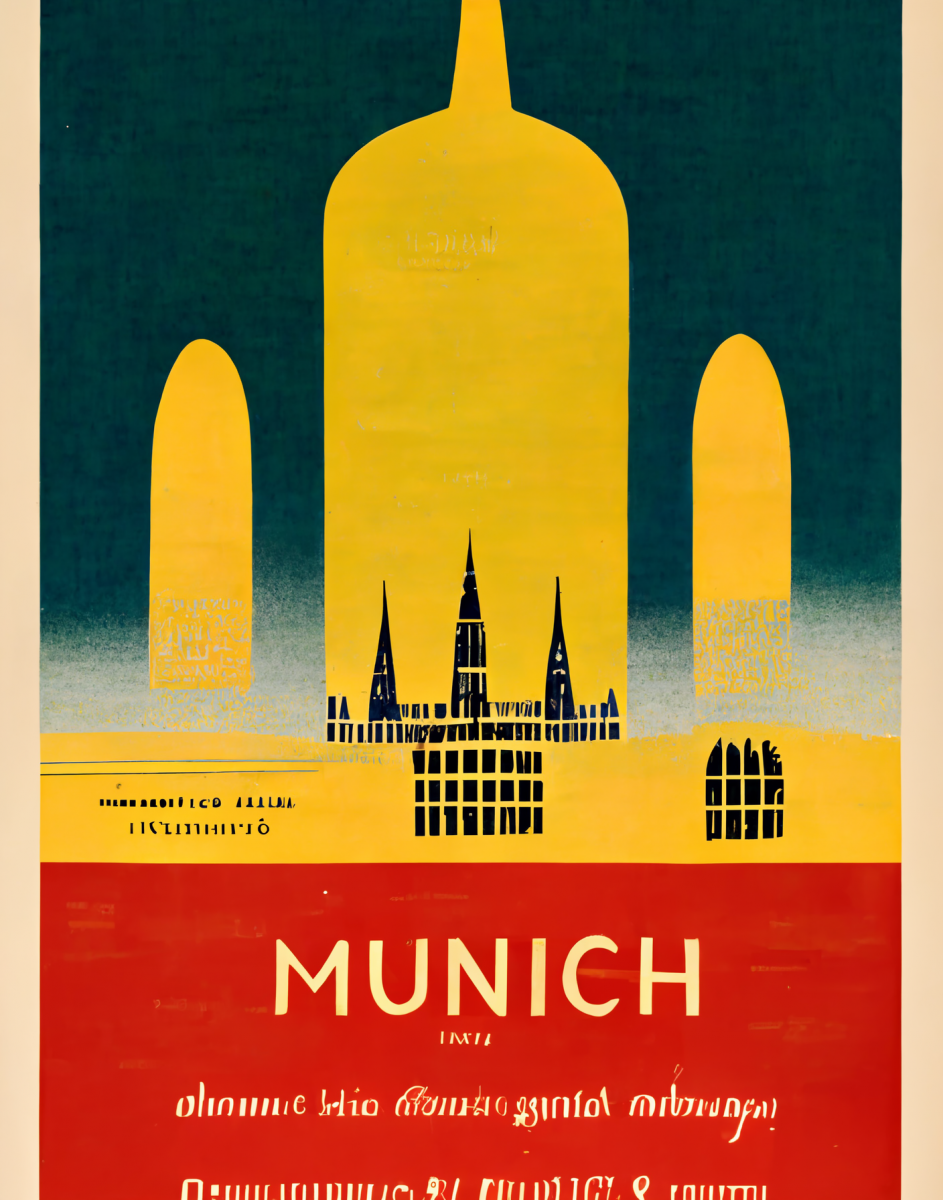By Dr. Michael E. Brown
Helles lager, a Bavarian classic first brewed in 1894 by Spaten Brewery in Munich, arose from key brewing science advances in the late 19th century. This style is now a global favorite and inspires much of the lager revitalization we see bubbling up in breweries across America. The light-colored, crisp-finishing, lager beer was an instant success and soon became the most popular beer in Bavaria, which already had a deep and an almost religious beer culture with the Purity Law and drinking guilds dating back to the 1400’s. In the early 20th century, due to the style’s popularity, other German breweries began brewing their own versions of Helles lager. Today, Helles lager is one of the most popular beer styles in the world due to its satisfying maltiness, refreshing finish, low-moderate alcohol, and low bitterness.
 The original Helles lager was brewed in 19th century Bavaria, under the Reinheitsgebot, the Beer Purity Law of 1516, using traditional brewing methods, famously idyllic water, and the standard brewing tools. Like all beers of Bavaria, Helles was brewed with pale malt, hops, yeast, and water. The malt was kilned to a light color to create a light and crisp beer, with recently developed English malting techniques adopted and integrated into German brewing, leading to what we know today as ‘Pilsner’, ‘Munich’, and ‘Vienna’ malts.
The original Helles lager was brewed in 19th century Bavaria, under the Reinheitsgebot, the Beer Purity Law of 1516, using traditional brewing methods, famously idyllic water, and the standard brewing tools. Like all beers of Bavaria, Helles was brewed with pale malt, hops, yeast, and water. The malt was kilned to a light color to create a light and crisp beer, with recently developed English malting techniques adopted and integrated into German brewing, leading to what we know today as ‘Pilsner’, ‘Munich’, and ‘Vienna’ malts.
The locally-grown Bavarian hops were used to add preservative qualities, subtle bitterness, and a balancing herbal-spice flavor, to offset the rich malt flavor. The hops used to brew helles lager in 19th century Bavaria were bred in Bavaria. The most common hop variety used was the Hallertauer Mittelfrüh strain. This hop variety is still used today to brew Helles lager and is a standard for authentic Helles.
The yeast, which Pasteur had recently proven was the cause of alcohol formation (1866), and Emil Hansen had recently isolated to make the world’s first pure yeast pitches (1883), was used to ferment the beer at lower-than-ale temperatures. The beer was then lagered, or stored, in cool caves or cellars for several weeks or months to allow the beer to clear, and clarification of the subtler flavors to develop.
Munich Helles lager beer is a light, crisp, and refreshing beer that is perfect for any occasion. Some of the most famous Helles lager beers known today include Augustiner-Bräu Augustiner Helles, Hill Farmstead Brewery Marie, Weihenstephaner Original, Spaten Franziskaner Bräu Münchner Hell, Firestone Walker Premium Lager, and Hacker-Pschorr Münchner Hell. Luckily for beer drinkers and German beer lovers, there has been anongoing revitalization of Munich Helles and Pilsner lager styles in the last few years, as brewers pursue refreshing alternatives to heavy-hitting IPAs or Imperial Stouts, and many breweries around the United States produce excellent Helles.
You’re probably within driving distance of a solid Helles on-tap, and you may be lucky enough to try one of the Great American Beer Festival top winners, with Gold, Silver, and Bronze respectively going to Frost Hammer Helles, Grains of Wrath Brewing, Camas, WA, Park Pass, Vibrissa Beer, Front Royal, VA, and Helles, Kulshan Brewing Co., Bellingham, WA.
Of course, it’s our opinion at MoreBeer that brewing a Munich Helles at home is always the best option, with the wide ingredient selection and top quality products, you can really hone in on a Helles that suits your tastes or competition goals. Brewing a clean lager, like a Helles, is the ultimate rewarding homebrewing challenge, as it requires solid sanitation practices, a deft hand with water chemistry/recipe, and healthy fermentation. This style can be a good test of one’s homebrewing skills and there are a few key elements of brewing that should be prioritized to achieve a clean, refreshing, and true-to-style Munich Helles.


Pulling on the expertise of homebrew legends like Jamil Zainasheff and Mike “Tasty” McDole, as well as brewers exploring the nuances of quality lager beer, I will highlight some basic things you can dial in to achieve the quality of Munich Helles you can be proud of.
The primary considerations for what is typically a very simple malt bill should be the richness of the malts, an attenuative mash temperature (between 148-152 °F/ 63-67 °C), and using brewing techniques to increase depth of flavor without creating an overly sweet finished beer.
From a malt selection perspective, going with a floor-malted Pilsner and/or less efficient, craft malts can provide more depth of flavor and maltiness. From a mash perspective, decoction is believed to produce richer grain flavor, but if you don’t want to invest the time/energy into decoction, no-sparge methods, such a brew-in-a-bag or no-sparge can also achieve richer malt profiles, all while ensuring a well-attenuating beer.
As to the standard Helles recipe, most of the grain-bill should be continental Pilsner malt anywhere between 80-90%, with the remainder being Munich malt. To add malt depth and/or mouthfeel and body, you can experiment with some additional character malts, such as Carapils/Dextrin malt, or swap out Munich for Vienna malt. To increase maltiness, Jamil Zainasheff likes adding a small amount of Melanoidin Malt (1-2%), while Tasty McDole was known to add some 2-Row (5%). The goal is to keep it simple while subtly enhancing the malt character, without making it cloyingly sweet. As Jamil noted, this beer is meant to be drank by the liter.
Looking at the mash pH, be sure to use acidulated malts or add brewing acids to ensure a mash pH towards 5.2-5.4 range. This will help optimize mash efficiency and ensure a crisp, clean mouthfeel and flavor to the finished beer. Adjusting the mash water chemistry is my preferred time to adjust mash pH. For this style, and with water chemistry in general, a less-is-more approach is recommended. Below is a good water profile range for Helles lager, with my recommendations in bold:
Calcium: 50 – 100 ppm (50 ppm)
Magnesium: 5 – 10 ppm (7 ppm)
Sodium: 5 - 10 ppm (5 ppm)
Chloride: 50 – 100 ppm (50 ppm)
Sulfate: 75 – 150 ppm (75 ppm)
Mashing for complete attenuation is the goal, as mentioned previously. Aim to hit a single saccharification rest between 148-152 °F/ 63-67 °C, for 40 minutes, stirring throughout. If you decide to do a decoction, remove an appropriate portion (1-3 gallons) of the mash, boil that portion separately, then return to the mash. Mash out at 168°F / 76°C for 10 minutes.
Boiling the wort for 60 minutes is sufficient. Add one or two hop additions, maximum. Hellertau Mittelfrüh hops are classic, as are any noble hop varietals. Magnum, being of Hellertau lineage also works well. Avoid overly fruity, tropical, or citrus-heavy hops to prioritize showcasing the malt flavors. Be sure to avoid adding any ester-like fruity flavors and aromas with New World hops – let the hops be a background dimension to the final beer.
For fermentation, you can either go with a more traditional low and slow, or you can try the revived Narziss/Tasty “fast-lagering” method. For traditional fermentation, start 2 degrees below your target starting temperature 48–55°F/ 9–13°C, aerate the wort for 1-2 minutes with oxygen, and pitch, holding the temperature for 2-4 weeks before slowly ramping up. For the fast-lagering method, also start lower, around 55-60°F/ 13-15°C, where you ferment about 50% of the gravity, at which point, you slowly raise the temperature, about 1°F/ 2°C daily, for the next 5-7 days, until the beer is finished. Let is sit at 66°F/ 19°C for another day, then transfer to keg or bottling. Zainasheff recommends against cold-crashing the final beer as this can stress the yeast. It’s better to get the beer off of the majority of the yeast and fined, into bottles or kegs as soon as possible, so lagering can begin.
There are a wide variety of yeasts one can choose from, with traditional German yeast probably producing more authentic character. Pitch sufficient yeast, possibly a double yeast pitch, or use a calculator to build a starter a few days before pitch day. Remember to let starter fully ferment and pitch fresh. Again, oxygenation at pitch is recommended but not essential. The goal is to give the yeast the least stressful start and lots of opportunities to focus on clean, not strained fermentation, which will produce the cleanest possible end-result.

WLP 830 – German Lager – consistent German lager strain
WLP 833 – Bock – alcohol tolerant German lager strain that creates added depth reminiscent of Ayinger beers
WLP 820 – Octoberfest/Marzen Lager – malty lager strain
Wyeast 2206 – Bavarian Lager
Wyeast 2308 – Munich Lager
OYL114 Omega Yeast - Bayern Lager – Munich-derived strain
34/70 Fermentis Saflager – Weihenstephan strain – dry yeast that’s temperature tolerant
 Heart of Bavaria – Munich Helles
Heart of Bavaria – Munich Helles5.5 gallon batch; 1.047 OG, estimated 1.010 final gravity
Bitterness: ~17.5 IBUs
Estimated Color: 3.5 SRM
9 lbs Floor-malted Pilsen Malt – 88.9 %
1 lbs Bonlander Munich Malt – 9.9 %
2.0 oz Melanoiden Malt – 1.2 %
Mash: (aim for pH of 5.2-5.3)
Saccharification rest: 40 minutes @ 148-152 °F/ 63-67 °C
Mash-out: 10 minutes @ 168°F / 76°C
Boil:
1.40 oz Hallertau – Boil 60.0 minutes – 4.00%AA = ~17.7 IBUs
1 Whirlfloc Tablet Boil 15.0 minutes
Cool the wort to pitching temperature. Aerate wort with pure oxygen for 90 seconds.
Pitch yeast at 53°F/ 12°C. Set temp to 55°F/ 13°C and hold until gravity reaches 50% of total expected gravity to be fermented, which would be around 1.028. Then slowly raise the temperature about 1°F/ 2°C daily, for the next 5-7 days until fermentation stops. Be sure to finish warm to eliminate diacetyl.
Keg or bottle with finings or gelatin. Carbonate to a healthy level (2.5-3 volumes) and pour slowly. As a homebrewer, you can start enjoying your beer as soon as you like, but if you want to submit it to competition, you may want to let is lager and clean up for at least 2 weeks before presenting your work.
1 lbs Bonlander Munich Malt – 9.9 %
2.0 oz Melanoiden Malt – 1.2 %
7.5 lbs LME Pilsen Light
Gather brewing water with liquid malt volume and boil-off rate considered. In a separate pot, heat 1 gallon of water to 155°F/ 68 °C. Add steeping grains to a muslin bag and steep at 155°F/ 68 °C for 30 minutes.
Raise the rest of the brewing water to boiling. Stir in the liquid malt extract. Add the steeping grain liquid.
Boil 60 minutes. Add the first hop addition with 60 minutes remaining in the boil. With 15 minutes of boil remaining add the rehydrated Whirlfoc tablet/Irish Moss flakes and with 10 minutes remaining, add the yeast nutrient.
Chill, oxygenate, pitch sufficient amounts of yeast, and ferment as above.
All contents copyright 2024 by MoreFlavor Inc. All rights reserved. No part of this document or the related files may be reproduced or transmitted in any form, by any means (electronic, photocopying, recording, or otherwise) without the prior written permission of the publisher.